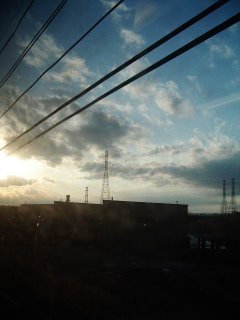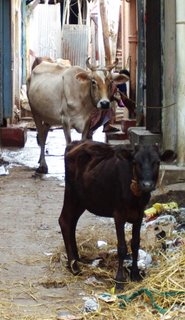What's your carbon footprint?

Published December 7 2005
The Daily Targum
If you're the type to read The Economist on mundane train and bus rides while your neighbors shove their elbows in your face turning the pages of their large, clumsy New York Times newspapers, then you'd notice the unusual frequency of environmental ads within this British weekly current affairs magazine.
One advertisement asks you, "What's your carbon footprint?" Which translates to: how much do you contribute to the carbon emissions that cause damage to the environment?
The same organization takes out another full-page color advertisement in a different magazine, saying, "Do you think solar energy will ever be a real alternative?" and continues below that, "it's a start."
A different concerned entity boasts in the Economist, "After investing heavily in a better technology to measure greenhouse gases, what do we do? Give it away."
Who are these environmental saints – creating 'carbon calculators' and giving us and their competitors other free technologies to measure our impact on the earth and how we can reduce it? They're oil companies.
And if you don't believe me – I know The Economist isn't exactly snatched off the stands by college students – perhaps you've seen the television commercials of a tanned, hippy-ish forty-something-year-old scrambling over red rocks looking for little sea shells, and talking about how she has a PhD. in environmental protection. And how she now works for Shell (the oil company, not the sea creature's disposable house).
British Petroleum launched a $200 million re-branding campaign five years ago, to take consumers beyond the fact that the company has had an unfortunate history with environmental unfriendliness (as I imagine most oil companies do) and convince them that British Petroleum is now thinking "Beyond Petroleum."
According to the company's website, "BP was the first major energy company to publicly acknowledge the need to take steps against climate change," and is now investing $350 million over five years to reduce internal CO2 emissions by up to one million tonnes each year.
They also claim to be one of the world's biggest investors in lower carbon fuels and technologies. Today, natural gas makes-up about 40% of BP's portfolio. Because of the higher hydrogen to carbon ratio in natural gas, the CO2 produced by natural gas combustion is 25-30% lower than with petroleum products and 40-50% lower than with coal, for the same energy output.
BP is one of the world's leading solar companies, and partners with more than 200 stores in
Chevron-Texaco, the company that smugly announced in a two-page color ad in the Economist that it gave away its Energy and Emissions Estimating System to its competitors after investing heavily in its research, has also launched an aggressive campaign on its environmental friendliness, accusing its consumers of using 25 barrels of oil a year, and then asking, "So are you ready to do something about it?"
The ad states that since 1973 alone, "improvements in energy efficiency have resulted in a 50% reduction of our daily energy use, which is the same as discovering 25 extra million barrels of oil equivalent every single day.
It continues, "Clearly, saving energy is like finding it."
All this talk of energy conservation by oil companies, whose primary mission continues to be that of drilling the earth and extracting every last drop of black gold from her loins, sounds a little fishy, doesn't it? Could there be a greater oxymoron than an environmental oil company?
After all, Exxonmobil announced the largest quarterly corporate profits in global history at $7.04bn (£4.4bn) last year, on the back of increasing oil sales. The
It seems the new drive for corporate citizenship and social responsibility, a phenomenon that has grown increasingly popular in the corporate world over the past decade, has infected the oil industry.
According to BP's Chief Executive of Exploration & Production, Tony Hayward, "if a company is going to be sustainable it must do two things. First it must run a successful business that makes a profit and invests for continued growth – this is fundamental and distinguishes business from other parts of society. Second it must be trusted and supported by those it does business with – customers, suppliers, governments, communities, informed observers and experts such as NGOs."
Businesses are increasingly finding that it makes more sense to put a little effort into helping the human population than to steamroll over the masses who can't afford your product to get it to the few who can. Better idea – contribute to lifting more people out of abject poverty and sickness, and you get a larger consumer base to buy your stuff.
In the oil industry, the corporate citizenship idea takes the form of encouraging conservation because, realistically, oil companies know that encouraging American consumers to reduce their carbon footprints may decrease oil sales here, but they have the mushrooming industrial nations in the East –
It may be a superficial publicity stunt, and it may pain me a great deal to say this, but as BP puts it, "It's a start." In the meanwhile, I say whip out that carbon calculator [available at www.bp.com] and keep a watchful eye on the push beyond petroleum.





